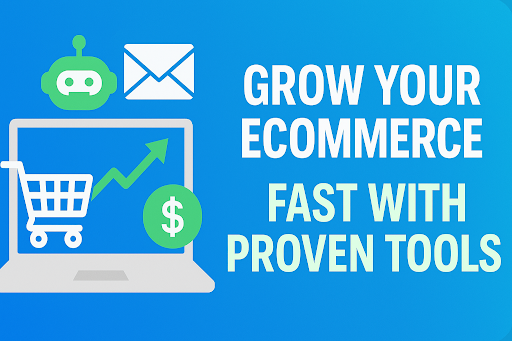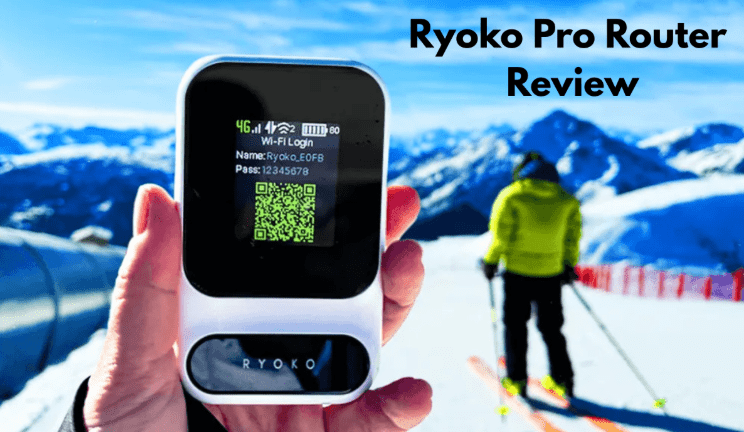Growing an online business is hard, it takes smart planning and the right tools. Digital marketplaces are competitive and constantly changing. To succeed in growing your ecommerce business, you will need a multi-faceted approach that combines industry specific strategies with modern technology. Start by building a strong website foundation and adding artificial intelligence tools to your site. Each tool is different and plays a crucial role in business growth.
In this guide we’ve covered ten essential tools and strategies that work for businesses of all sizes. You’ll learn about email marketing, social media engagement, AI chatbots, search engine optimization, and paid advertising. Each section has a variety of tips that you can begin to implement immediately.
Modern ecommerce growth is reliant on understanding your customers and being able to meet them where they shop. Whether you’re building personalized email campaigns, interacting with your customers on social media, or using AI-powered customer service, building genuine connections is essential to driving long-term success.
The strategies outlined below have helped thousands of online businesses increase their revenue and customer base. By following these proven methods consistently, you can begin to transform your ecommerce store into a thriving, profitable business that stands out in today’s everchanging market.
1.Start with a Strong Website Foundation
Your website is your digital storefront. Make sure that it loads fast and is easy to use. Slow loading websites are an easy way to lose customers quickly.
Choose a clean design that works on phones as more and more people shop on mobile devices now. Test your site on different screen sizes.
Your product photos should be crisp and show the product from multiple angles. Write simple product descriptions that explain without confusing your guests. Include size charts and return policies.
Make checkout simple with a few steps. Offer guest checkout options. Save customer payment details for faster future purchases.
2.Implement AI Chatbots for Customer Service
Consider installing chatbots on your website and social media pages to support your customers whenever they need it. They can handle common questions about shipping, returns, and products. This frees up time for your team to focus on more complex customer issues.
These chatbots learn from customer interactions and improve over time. Chatbots can also recommend products based on customer preferences.
Modern chatbots integrate with your inventory system. They provide real-time stock information to customers. This reduces disappointment from out-of-stock items.
Set up chatbots to collect customer information. They can gather email addresses and preferences for marketing campaigns. This turns website visitors into potential customers.
3.Utilize Pay-Per-Click Advertising
PPC advertising delivers quick results when done right. Start with Google Ads to target high-intent shoppers.
Research profitable keywords with good search volume. Create compelling ad copy that highlights your unique value. Include clear calls-to-action in your ads.
Set up proper tracking to measure ad performance. Test different ad variations to find what works best. Adjust bids based on conversion rates.
Use retargeting ads to reach previous website visitors. Show them products they viewed before. This increases chances of completing purchases.
Consider shopping ads for product-based businesses. These show product images and prices directly in search results.
Companies like CausalFunnel use advanced AI tools and trending techniques to help ecommerce brands grow fast. They specialize in creating high-converting PPC campaigns that maximize return on ad spend. Their data-driven approach helps businesses reach the right customers at the perfect moment.
4.Use Email Marketing to Build Relationships
Email marketing is a good beginner strategy that gives great returns on investment. These tools can be used to do things like sending welcome emails to new subscribers. Send our product updates and special offers to keep your business top of mind for your customers.
Create email lists based on customer interests. Send targeted messages to different groups. Personalized emails get better results.
Set up automated email sequences. Send cart abandonment emails when customers leave items behind. Follow up after purchases with thank you messages.
Keep emails short and mobile-friendly. Use clear subject lines that grab attention. Include compelling call-to-action buttons.
5.Leverage Social Media for Brand Awareness
Social media is a great tool to help you reach new customers everyday. Make sure to choose platforms where your target audience spends their time.
Post high-quality product photos and videos. Share behind-the-scenes content to build trust. Respond quickly to comments and messages.
Use hashtags to increase visibility. Partner with influencers in your niche. Run social media contests to boost engagement.
Create shoppable posts when possible that link back to your website. Make it as easy as possible for followers to buy products directly from social media.
6.Master Search Engine Optimization
SEO brings free traffic to your online store. Research keywords your customers use when searching for products.
Start by optimizing product pages with relevant keywords. Each product will need a unique description. Use keywords naturally in titles and content.
Next, start creating educational blog content around your products. Answer common customer questions through articles. This builds authority and attracts organic traffic.
Build quality backlinks from other websites. Guest post on industry blogs. Partner with other businesses for link exchanges.
Improve your website speed and mobile experience. Search engines favor fast, user-friendly sites in their rankings.
7.Focus on Customer Reviews and Testimonials
Positive reviews build trust with potential customers. They influence buying decisions more than traditional advertising.
Send follow-up emails asking satisfied customers for reviews. Make the review process simple with direct links. Respond professionally to all reviews, both positive and negative.
Display reviews prominently on product pages. Use review widgets and star ratings. Share customer testimonials on social media.
Address negative reviews quickly and professionally. Offer solutions to unhappy customers. This shows you care about customer satisfaction.
Consider using review management tools. These help monitor and respond to reviews across multiple platforms.
8.Implement Content Marketing Strategies
Content marketing is a great way to attract customers by sharing valuable information. Create blog posts, videos, and guides related to your products. Sharing educational content can help build a trusting relationship with your audience.
Answer common questions your customers ask. Provide helpful tips and tutorials. Share industry news and trends.
Content needs to be optimized for search engines with relevant keywords. Use internal links to connect related articles to one another. This keeps visitors on your site longer.
Promote content across social media channels. Email subscribers about new articles. Guest post on other websites to reach new audiences.
Track content performance with analytics tools. Focus on topics that generate the most traffic and engagement.
9.Build Strategic Partnerships
Partnerships expand your reach without adding big advertising costs. Look for businesses that serve similar customers but aren’t direct competitors of yours.
Cross-promote each other’s products through email marketing or social media. We suggest offering a bundle deal that combines complementary products. Share social media content to reach new audiences.
Partner with influencers and bloggers in your industry. Provide free products in exchange for honest reviews. Choose partners with engaged, relevant audiences.
Join affiliate marketing programs. Let others promote your products for commission. This increases sales without upfront advertising costs.
Attend industry events and trade shows. Network with potential partners and customers. Build relationships that lead to future opportunities.
10.Optimize Your Sales Funnel
A smooth sales funnel should guide your visitors toward purchases. Identify where customers drop off in the buying process.
Create landing pages that resonate with your user segments for your different traffic sources. Match page content to visitor expectations. Use clear headlines and benefit statements.
Add trust signals like security badges and guarantees. We always recommend sharing customer testimonials and reviews clearly on your website. Also show contact information and business credentials.
Simplify the checkout process with minimal form fields. Offer multiple payment options including digital wallets. Provide clear shipping and return information.
Use exit-intent popups to capture leaving visitors. Offer discounts or free resources in exchange for email addresses.
11.Track and Analyze Performance
Regular analysis helps you make better business decisions. Set up Google Analytics to track website performance.
Monitor key metrics like traffic, conversion rates, and average order value. Identify your best-performing marketing channels. Focus resources on strategies that deliver results.
Use heat mapping tools to see how visitors interact with your site. Find areas where people get confused or lose interest. Make improvements based on user behavior.
Set up conversion tracking for all marketing campaigns. Compare performance across different channels. Adjust budgets to favor profitable activities.
Create monthly reports to track progress toward goals. Share insights with your team to improve performance. Use data to make informed decisions about future strategies.
Conclusion
Growing an ecommerce business isn’t easy, it requires consistent effort across multiple areas. Focus on providing excellent customer experiences while using smart marketing strategies to set your business up for long term growth.
Start with one or two methods from this guide. Master them before adding new tactics. Consistent action leads to sustainable growth over time so start slow.
Remember that building a successful online business takes patience. Track your progress and celebrate small wins along the way. Stay focused on serving your customers well.













